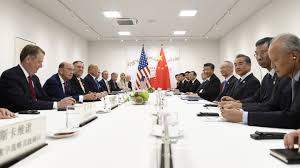End China’s Infection of the US Power Grid

China and “probably one or two other” countries can shut down the U.S. power grid through a cyberattack. This disturbing revelation was made by Admiral Michael Rogers, former head of the National Security Agency, to Congress – in November 2014.
China has also become the world’s leading supplier of transformers – the “spine” of electricity grids -- according to a 2014 U.S. Department of Energy (DoE) report. This also presents significant challenges to U.S. grid security.
For economic and security reasons, the United States should no longer purchase transformers and other electric grid equipment manufactured in China. It is important to end relationships that U.S. utilities have directly with Chinese businesses and multi-national companies manufacturing transformers in China.
These actions are envisioned under a May 1 Executive Order President Trump issued on protecting the bulk-power grid. Chinese power equipment provided to the U.S. can be embedded with software and hardware to remotely commit mischief from Beijing, enhancing its ability to commit cyberattacks.
Such items will not be easy to find. Large power transformers are huge, and weigh between 100 and 400 tons.
There is also a hardware risk. Counterfeit items are common throughout China and can easily be put into large power transformers, knowingly or unwittingly. Even if China is not presently doing this, the potential risks are too high.
Meanwhile, Chinese transformer manufacturers are thriving. On its website, JiangSu HuaPeng Transformer Co. (JSHP Transformer) boasts that it has recently completed projects for customers in Houston, Las Vegas, and New Jersey. On August 5, Baobian Electric shipped the first of three phase reactors to the New Mexico Public Utilities Service Company.
TBEA Transformer Industrial Group advertises it “exports its products to over 30 countries in Asia, Africa, Europe and the Americas.” Its only jobs created in the U.S. appear to be with a sales office in Southern California.
In its 2014 report DoE found that “six domestic manufacturers accounted for all power transformers produced in the United States, whereas more than 30 power transformer manufacturers existed in China.” U.S. manufacturers were able to meet less than 40 percent of annual U.S. demand.
Since 2009, the U.S. has become highly dependent on Chinese transformers. In 2019, Charles Durant, deputy director of counterintelligence at DoE said, “There have been over 200 Chinese transformers that have come into the U.S. energy sector in the last 10 years. Before that, there were zero.”
There is simply no tariff that is high enough for the United States to impose on Chinese-made transformers and key electrical equipment, given the monumental damage they can cause. It is not just the electrical system that is at risk but other key infrastructure that depends on the power grid, such as water filtration plants, hospitals, and manufacturing plants.
Many U.S. electric utilities and others involved with the grid have raised howls about how difficult it will be to identify and address foreign components in the grid. Yet, there has been a process by which information can be provided to the DoE as it evaluates specific regulations. And for more than a century the U.S. did not depend on China to keep our electricity running.
The need to scrutinize existing Chinese made items and prevent further purchases from China and other hostile countries, including Russia, is common sense. It will also be good for the U.S. economy.
We must also continue and accelerate vigorous work to prevent electric grid cyberattacks. This should include stricter standards from the North American Reliability Corporation and the Federal Energy Regulatory Commission. Moody’s and other credit ratings are taking notice of cyber practices and increased attention to this will be helpful for investors and all Americans.
In the United States, world-class companies such as Raytheon, BAE Systems and Sierra Nevada Corp. are among those with cyber-fighting expertise. It will also be important for the utility industry to share information more readily and for government to oversee, if not mandate, such best practices.
Beyond the serious near-term challenges, there is great opportunity. America will need an abundance of transformers in the next 20 years as the electric grid is modernized. And, with billions of people lacking sufficient electricity around the world, there is an opportunity to again make this an export market for the United States.
Revitalizing and on-shoring America’s transformer and electric grid component industry makes us safer and our economy stronger. America should aim to lead the world in transformer manufacturing within the next six years, to complement our cyber protection leadership.
Photo: AP Photo/Susan Walsh




